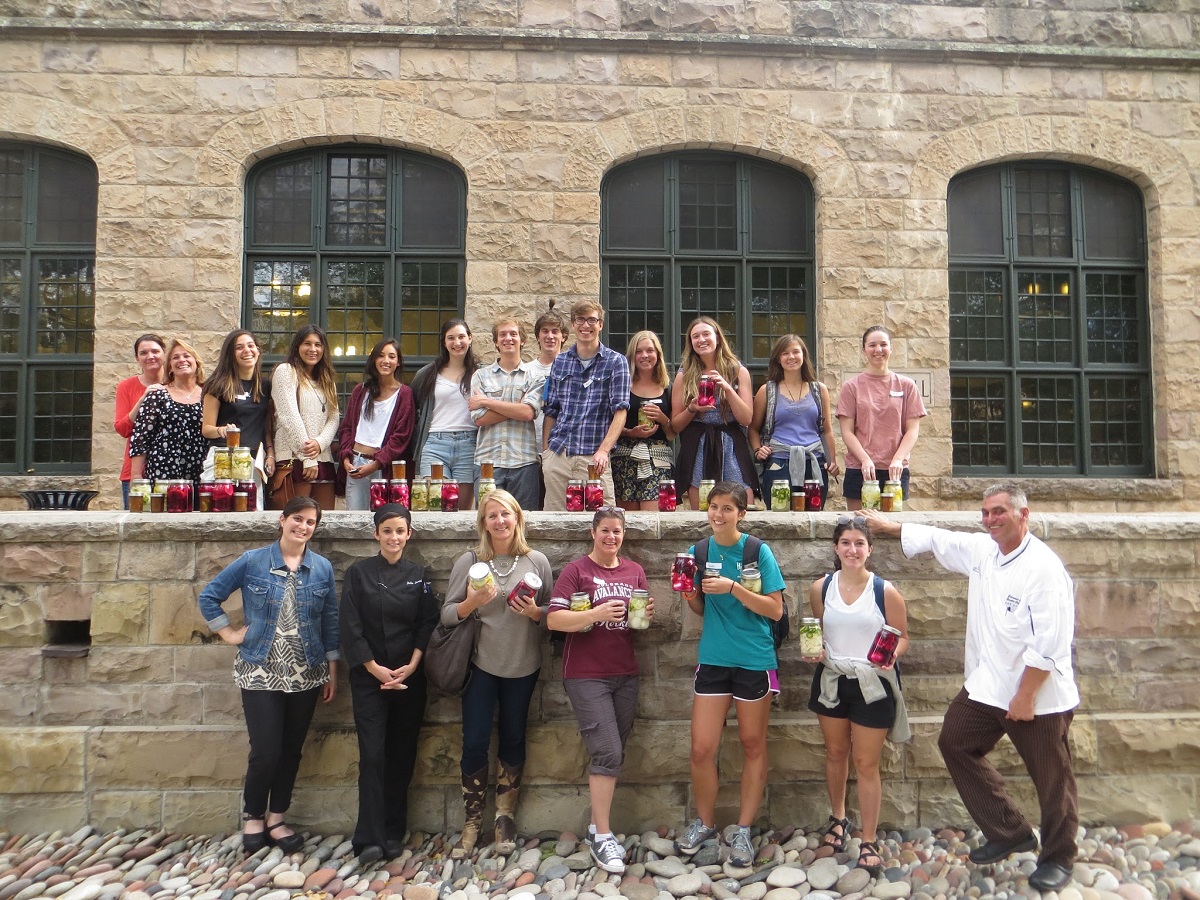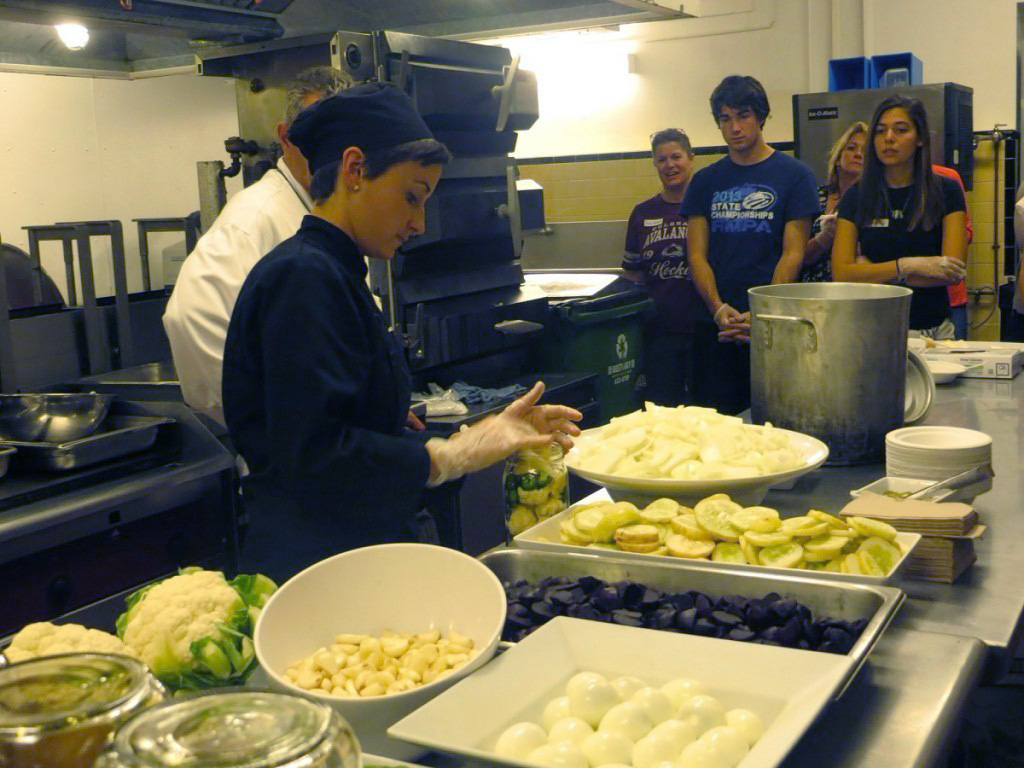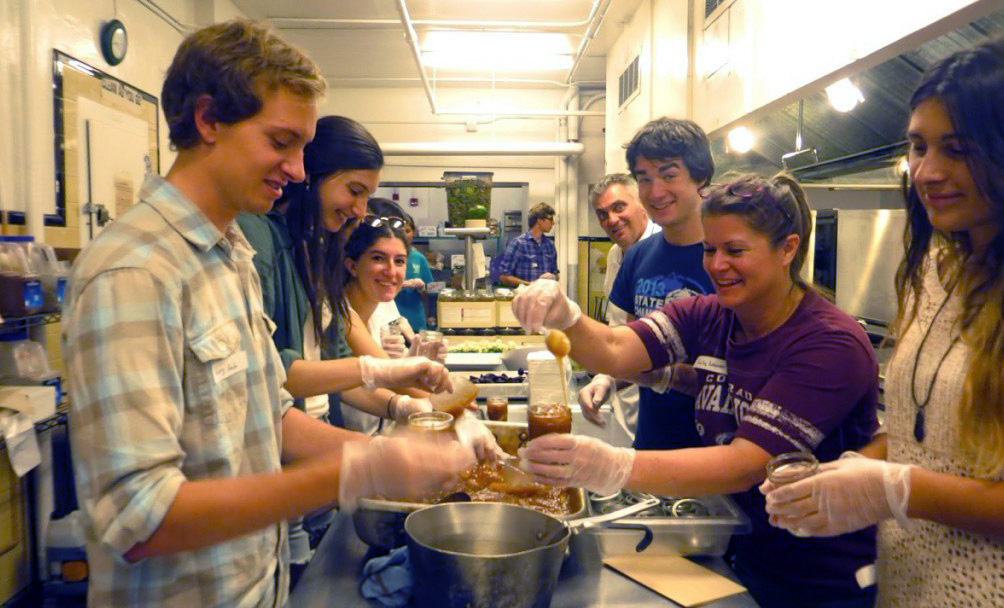Preserving Flavor and Memories at Colorado College

Colorado College students and staff show off the pickles and preserves they created in their food preservation class with Executive Chef Ed Clark and Sous Chef Jackie Lovecchio.
Anyone that knows me well, knows that my love for pickles runs deep.
Briny, crunchy, sweet, and acidic, pickled vegetables are like little explosions of flavor. But my passion for pickles goes beyond taste — it’s rooted in childhood memories of the local deli stocked with kosher dills and the nice butchers behind the counter who would always give me one for free.
During a recent trip to Colorado College, I met chefs, students, and college staff who appreciate pickles and preserves just as much I do. Novices to seasoned canners came together for Executive Chef Ed Clark’s and Sous Chef Jackie Lovecchio’s first food preservation class, and everyone had some memory about pickled and preserved foods. Jackie shared her story growing up in an Italian family where her mother’s pickles were never complete without a little (or a lot) of garlic. Another participant reminisced about the comforting sound of the popping of lids when her mother was making a big batch of pickles in the kitchen.
The only gripe shared was about pickled bananas. A word to the wise: overripe bananas are best baked, not pickled (however, do consider guineos en escabeche, a Puerto Rican condiment of pickled green bananas).

Sous Chef Jackie Lovecchio makes a sample batch of pickles.
After swapping stories, we dove into the hands-on portion of the class. Ed showed the group how to make and can apple preserves, or as he affectionately calls it, “apple love.” Before the students arrived, he put a big pot of Mesa Winds Farm apples on the stove and cooked them down for a few hours. These local apples had a little pest damage that made them unsuitable for serving whole, but they could be saved from the compost bin with just a little slicing and dicing.
We sampled the jam in a savory preparation, on a baguette with brie, and then for a sweeter version over vanilla ice cream with house made salted caramel sauce. Ed walked the group through the proper canning procedure for the preserves — washing and sanitizing the jars, attaching the lid, cooling, and creating a vacuum seal — and then each participant filled their own jar to take home. If they didn’t achieve a good seal, Ed cautioned everyone to “not try and be cowboys” and keep the preserves in the fridge.
Our adventures in food preservation continued on as Jackie prepared the brine for pickled vegetables. She introduced us the fall bounty ready to be pickled: Venetucci Farm jalapeños and lemon cucumbers harvested just miles from campus, beets, onions, garlic, cauliflower, and even hard-boiled eggs. Jackie reminded us there are no wrong answers when filling up our jars (well maybe except for ripe bananas). We all have different tastes — from her love of garlic to my affinity for all things dill. Taking her advice to heart, everyone mixed and matched the ingredients to create their own kaleidoscope of colors and flavors.
The students left class with armloads pickles and preserves, sure to be the envy of all of their friends and roommates. Not only will they enjoy local flavors throughout the winter months, they have the skills and knowledge to create new memories for years to come.

Colorado College students and staff fill their canning jars with apple preserves.